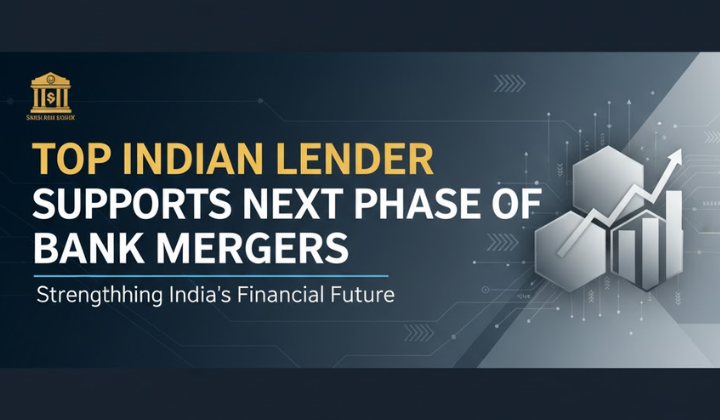India’s largest bank, State Bank of India (SBI), has voiced strong support for the upcoming phase of public sector bank mergers, signaling a major shift in the country’s banking sector. With the government aiming to create bigger and more efficient state-owned banks, SBI’s backing highlights the importance of consolidation to strengthen balance sheets, improve operational efficiency, and meet the growing financial needs of India’s rapidly expanding economy.
Top Indian Lender Supports Next Phase of Bank Mergers
India’s largest bank, State Bank of India (SBI), has expressed strong support for a new round of mergers among public sector banks (PSBs). This endorsement comes as the government looks to strengthen state-owned banks, making them bigger, more efficient, and capable of supporting India’s long-term economic growth.
Why SBI Supports Mergers
SBI Chairman Challa Sreenivasulu Setty explained that some PSBs are still too small to operate efficiently. By combining these banks, the country can create stronger institutions with better resources, technology, and governance. Such banks would be able to:
- Meet growing credit demand: India’s bank credit needs to increase significantly to fund future growth.
- Finance large projects: Infrastructure development like highways, ports, and smart cities needs banks with strong balance sheets.
- Compete globally: Larger banks can handle foreign investments and international business more effectively.
- Operate efficiently: Mergers reduce costs and allow unified technology and management systems.
How the Mergers Will Happen
The government is reportedly planning the mergers in multiple phases, expected to be announced in April–May 2026. Unlike past one-time mergers, this phased approach will allow smoother integration and better planning for capital requirements.
Banks likely to be part of this new wave include UCO Bank, Punjab & Sind Bank, Indian Overseas Bank, Central Bank of India, Bank of Maharashtra, and Bank of India. They may merge with each other first or join bigger banks like SBI or Punjab National Bank (PNB).
SBI’s Own Growth Strategy
SBI is not only supporting these mergers but is also expanding its own services:
- Over 1,000 wealth managers have been hired to serve high-net-worth clients.
- 110+ micro-markets have been identified for premium services.
- FY26 credit growth is now expected at 12%–14%, driven by corporate and infrastructure lending.
Impact on India’s Banking Sector
If implemented, these mergers could:
- Reduce the number of public sector banks from 12 to 6–7 larger institutions.
- Strengthen banks’ balance sheets and lending capabilities.
- Improve operational efficiency and help meet SEBI’s 25% public shareholding norms.
| Fact | Detail |
| SBI Chairman | Challa Sreenivasulu Setty |
| SBI Loan Market Share | ~25% |
| Target GDP by 2047 | $30 trillion |
| Current PSU Banks | 12 (down from 27) |
| Needed Bank Credit Growth | 56% → 130% of GDP |
| SBI Assets | Nearly ₹69 trillion |




 GA Capsule for SBI Clerk Mains 2025, Dow...
GA Capsule for SBI Clerk Mains 2025, Dow...
 The Hindu Review October 2022: Download ...
The Hindu Review October 2022: Download ...
 OICL AO Apply Online 2025 Starts at orie...
OICL AO Apply Online 2025 Starts at orie...







